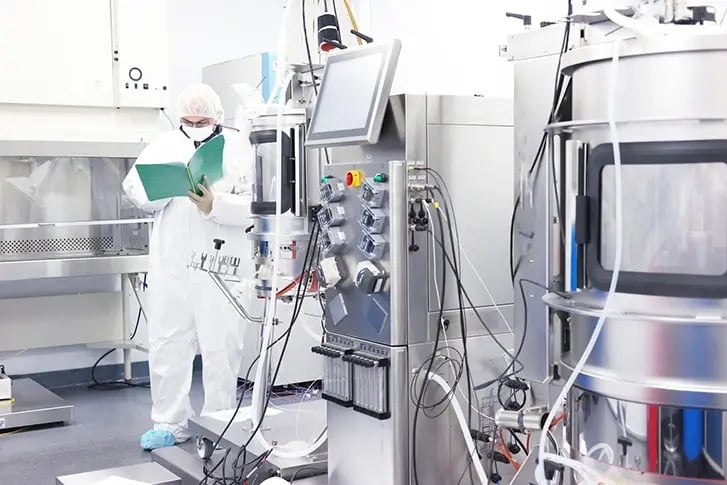What is a Pre-Approval Inspection (PAI)?
A pre-approval inspection (PAI) is performed to provide the Food and Drug Administration (FDA) assurances that a manufacturing site named in a drug application is capable of consistently manufacturing producing a safe drug product, and that the submitted data is accurate and complete against what was filed in their application.
Contact UsThe PAI will assess a drug manufacturing facility's production capability. The PAI will establish whether the applicants' manufacturer can adequately produce, and sell commercially, the product it is applying for. Manufacturers named for the first time in the following applications are subject to a PAI:
- New drug application (NDA) and abbreviated new drug application (ANDA), both human and animal
- Biologic license application (BLA)
- Premarket approval application for medical devices (PMA)
A PAI may be conducted at any supporting vendors and service providers listed in the application, such as, active pharmaceutical ingredient (API) manufacturers, control testing labs, and packaging facilities. During a pre-approval inspection, the FDA inspectors evaluate and assess the following at each site:
- CGMP compliance
- Conformance to application
- Manufacturing reliability
- Authenticity and accuracy of data
- Ability to scale-up
- Adequacy of analytical methods
When does the FDA perform Pre-Approval Inspections?
FDA conducts PAI inspections based on the following risk-based criteria:
Facility Risk
- History of CGMP issues related to the facility or known for the product type
- Recent FARs relevant to application product
- Recent recalls relevant to application product
- Numerous applications filed at once
Product Risk
- New molecular entity
- First application filed by applicant
- First ANDA filed for an approved drug
- Reported complaints, ADEs, stability issues
- Patient population or for serious condition
- Breakthrough therapy, shortage situation
Process Risk
- Narrow therapeutic range (95%-105%)
- API derivation is high risk (derived from animal tissue)
- PAT, NIR, QbD
- Development data is incomplete
- Batch records non-specific
- Complicated process
- Substantially different process than previously reviewed at a facility
How does a company get ready for a PAI?
Companies should consider performing a mock PAI 6-12 months before the actual PAI, to allow plenty of time to address any identified issues and prepare for the formal inspection. Here are some preparation points to consider.
PAI Readiness Steps:
- Inspection Readiness Training
- Provide site level training to any individuals who could be involved in the inspection. Focus on what to expect, how to interact with inspectors, and how to prepare.
- Establish a PAI Readiness Team
- The team should include:
- Quality auditors
- Relevant management
- The team should include:
- Develop list of potential Subject Matter Experts (SMEs)
- Chemistry expert
- Microbiology expert
- Process/Facility expert
- Formulation expert
- Local quality systems expert
- Know your supporting vendors and service providers
- Set-up main rooms for audit personnel and activities:
- Front Room
- Primary audit room
- FDA and Company representatives
- Primary audit room
- Back Room
- “War Room” for document staging and support
- Key personnel
- Document reviewers
- SME coaching
- “War Room” for document staging and support
- Front Room
The PAI readiness team should meet before the inspection begins to ensure everything is readily available for presentation, and to discuss any last-minute details. During each day of the PAI inspection, after the Inspector leaves, the PAI readiness team should meet to discuss observations and comments from the day, prepare any needs/requests for the following day.
Outcomes of the Pre-Approval Inspection
After the PAI, the lead investigator will either recommend approval or withholding of approval. Recommending approval indicates there were no significant issues surfaced during the inspection, but the company should still respond to the noted observations. On the other hand, recommending withholding of approval means the site is not fully CGMP compliant, information in CMC is not consistent with site records, or the submitted information is not accurate or complete. When approval has been withheld, it is critical for the company to properly respond to the noted observations.
Companies need to understand that the pre-approval inspection is the starting point for all future inspections. Once approval is granted, your firm is subject to routine inspections. While a risk assessment is used by the FDA to determine the frequency of inspections, domestic firms can typically expect an inspection every 2-years and a firm located outside the United States, can typically expect to be notified of an impending inspection.
Get Expert Guidance For Your Upcoming Pre-Approval Inspection (PAI)
Now that you have a better understanding of what PAI is, check out our next blog on PAI readiness, where we’ll explain what to do during your mock PAI and how to address your findings.
If you have additional questions about conducting a PAI and need assistance from an expert consultant, contact ProPharma for further support. Our compliance experts can help you navigate every aspect of your upcoming PAI.

